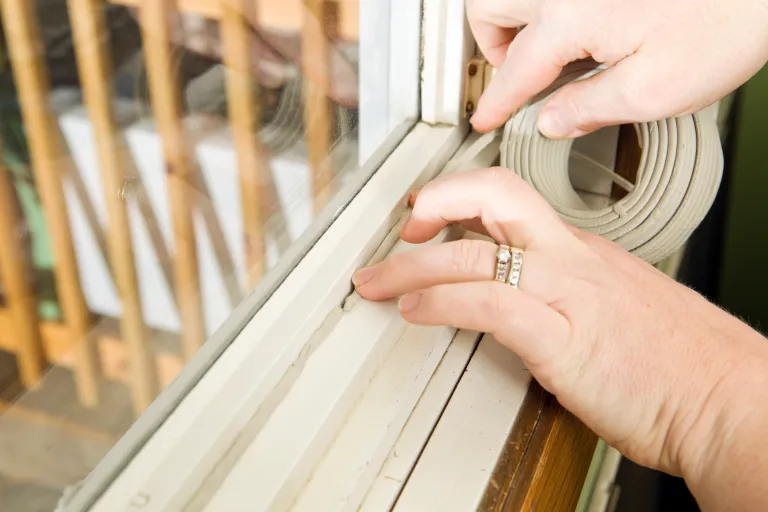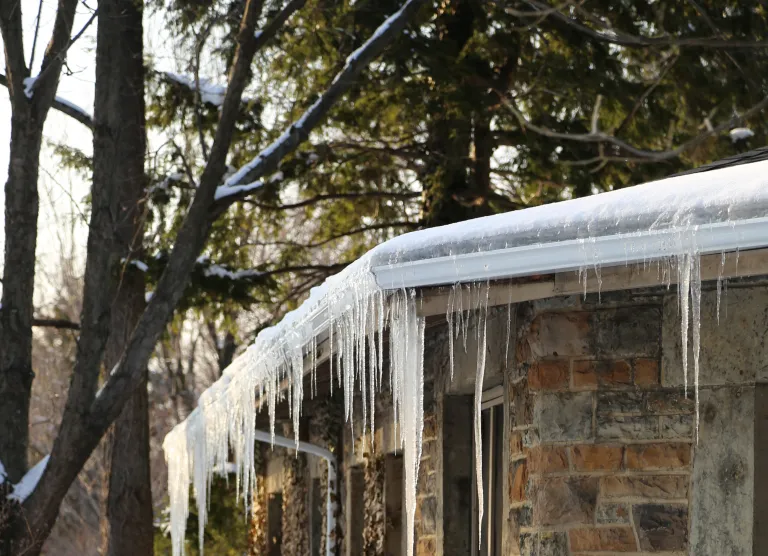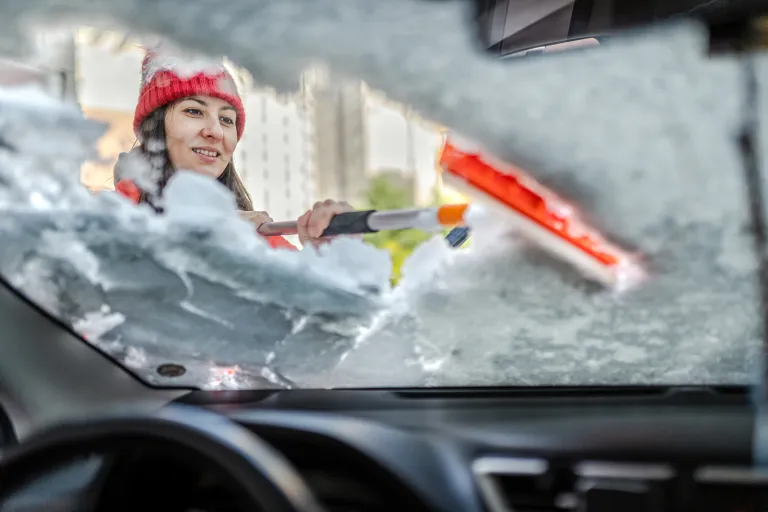Moving to a cold state can feel like stepping into a completely different world. If you’re used to warm weather, palm trees, or even just mild winters, the thought of facing freezing temperatures, snowstorms, and icy roads can be daunting.
But don’t worry — with the right knowledge and preparation, you can make this transition smoothly and even start to enjoy the unique beauty and lifestyle that cold states offer.
Living in a cold climate means more than just buying a winter coat and boots. It means adapting your home, your daily routines, and your mindset to handle winter’s challenges safely and comfortably.
From preventing frozen pipes to clearing snow safely, every little step counts when it comes to thriving in cold weather. You might have heard stories about power outages, icy sidewalks, or skyrocketing heating bills — but these don’t have to become your reality if you prepare in advance.
One of the biggest surprises for newcomers is how much work it takes to get a home ready for winter. Cold weather can cause damage to your property if you’re not careful. Pipes can freeze and burst, roofs can suffer from heavy snow and ice buildup, and heating systems can be strained to the point of failure.
Understanding how to winterize your home is a crucial first step. It means sealing gaps where cold air sneaks in, insulating vulnerable pipes, and making sure your heating system is ready to keep you warm through the coldest days.
Another important part of moving to a cold state is managing your day-to-day life during winter. Snow and ice can disrupt your routine, from getting your car out of the driveway to walking safely on sidewalks. Having the right tools like snow shovels, ice melt, or even a snow blower can make a huge difference. Knowing how to safely remove snow and ice not only protects your home but also helps prevent slips and falls, which are common hazards in winter.
The cold weather also impacts your wallet. Heating bills tend to rise significantly, and without smart habits, you might find yourself spending much more than you expected to stay comfortable. Luckily, there are simple tricks to keep your home warm without wasting energy, such as using programmable thermostats, dressing warmly indoors, and sealing drafts around windows and doors.
On top of all that, winter storms can sometimes cause emergencies — power outages, blocked roads, or even frozen water supplies. Being prepared with an emergency kit stocked with essentials like flashlights, food, water, and warm clothing is a must. It’s about peace of mind, knowing that you and your family can handle unexpected situations safely.
Lastly, don’t forget about the outdoors. Cold weather can be tough on trees and plants around your home. Learning how to protect your landscaping from frost and snow damage will keep your yard looking healthy year-round.
In this guide, we’ll walk you through seven key things you need to know how to do when moving to a cold state. From winterizing your home to assembling an emergency kit, these tips will help you build confidence and comfort as you settle into your new environment. Whether this is your first cold winter or you’re simply looking to improve your preparedness, this advice will set you up for success in your chilly new home.
1. Winterize Your Home

Winterizing your home is essential to keep it warm and energy-efficient during the cold months. Here’s how to get started:
- Seal Drafts: Use weatherstripping and caulk to seal gaps around windows and doors. This prevents cold air from entering and warm air from escaping.
- Insulate Pipes: Protect your pipes from freezing by insulating them, especially those in unheated areas like basements and attics.
- Check the Roof and Gutters: Ensure your roof is in good condition and clean out gutters to prevent ice dams, which can cause water damage.
- Service Heating Systems: Have your furnace or heating system inspected and serviced annually to ensure it’s operating efficiently.
- Install a Programmable Thermostat: This allows you to set temperatures based on your schedule, saving energy and money.
Taking these steps can help you stay warm and reduce energy bills during the cold months.
2. Prevent Plumbing Problems
Frozen pipes are a common issue in cold climates, leading to bursts and water damage. Here’s how to prevent plumbing problems:
- Insulate Exposed Pipes: Use foam sleeves or heat tape to protect pipes in unheated areas.
- Keep a Drip: During extreme cold, let faucets drip slightly to prevent freezing.
- Open Cabinet Doors: Allow warm air to circulate around pipes under sinks.
- Disconnect Outdoor Hoses: Drain and store hoses, and shut off outdoor water valves.
- Know Your Main Water Shutoff: In case of a burst pipe, knowing how to quickly shut off water can minimize damage.
Regular maintenance and vigilance can save you from expensive repairs.
3. Identify Roof and Gutter Issues

Snow and ice can wreak havoc on your roof and gutters. Here’s what to watch for:
- Ice Dams: These form when heat escapes through the roof, melting snow that refreezes at the eaves. They can cause leaks and damage.
- Clogged Gutters: Leaves and debris can block gutters, leading to water overflow and ice buildup.
- Damaged Shingles: Inspect for missing or broken shingles that can allow water infiltration.
- Sagging Gutters: Heavy snow can cause gutters to pull away from the house.
Regular inspections and maintenance can prevent these issues and extend the life of your roof.
4. Protect Trees and Prevent Damage
Cold weather can be tough on trees and shrubs. Here’s how to protect your greenery:
- Wrap Vulnerable Plants: Use burlap or tree wrap to shield young or delicate trees from frost and wind.
- Mulch: Apply mulch around the base of trees to insulate roots.
- Prune Dead Branches: Remove weak or dead branches that could break under snow weight.
- Water Before Freeze: Ensure trees are well-watered before the ground freezes to help them withstand winter stress.
Proper care can help your landscape thrive despite harsh conditions.
5. Prepare for Higher Heating Bills

Heating costs can rise significantly in colder climates. Here’s how to manage expenses:
- Set Thermostat Wisely: Keep it at 68°F when home and lower when away or sleeping.
- Use Ceiling Fans: Run fans clockwise to circulate warm air.
- Dress Warmly Indoors: Layer clothing to stay comfortable without cranking up the heat.
- Seal Leaks: Check for drafts around windows and doors, and seal them to prevent heat loss.
- Regular Maintenance: Keep heating systems in top shape with annual check-ups.
These strategies can help you stay warm without breaking the bank.
6. Stock Up on Snow and Ice Removal Equipment
Being prepared for snow and ice is essential. Here’s what you’ll need:
- Snow Shovel: A sturdy shovel is a must-have for clearing walkways and driveways.
- Snow Blower: For larger areas, a snow blower can save time and effort.
- Ice Melt or Sand: These help prevent slips on icy surfaces.
- Roof Rake: Use this to remove snow from your roof and prevent ice dams.
- Car Tools: Keep an ice scraper and snow brush in your vehicle.
Having the right tools on hand makes winter maintenance manageable.
7. Assemble an Emergency Kit
Winter storms can lead to power outages and other emergencies. Prepare a kit with these essentials:
- Flashlights and Batteries: Ensure you have light sources if the power goes out.
- Non-Perishable Food and Water: Stock enough for at least three days.
- Blankets and Warm Clothing: Stay warm if heating systems fail.
- First Aid Kit: Be ready to handle minor injuries.
- Battery-Powered Radio: Stay informed about weather conditions and emergency updates.
- Chargers: Keep portable chargers for phones and other devices.
Being prepared can make all the difference during unexpected situations.
Final Thoughts
Moving to a cold state can feel overwhelming at first, especially if you’re used to milder or warmer climates. The change in weather means a change in lifestyle, and it’s important to approach this transition with careful preparation and the right knowledge.
Cold weather can bring many challenges—from frozen pipes and icy sidewalks to higher heating costs and the need for emergency readiness. But with the right steps, these challenges don’t have to be obstacles; instead, they become manageable parts of your new life.
The key to thriving in a cold state lies in preparation. Winterizing your home is the foundation of staying comfortable and safe. By sealing drafts, insulating pipes, and servicing your heating system, you create a warm and energy-efficient living space that protects you from the harsh outdoor elements. This not only helps you stay cozy but also keeps your energy bills in check, saving you money over time.
Protecting your plumbing is another crucial step. Frozen pipes can cause serious damage, leading to expensive repairs and significant inconvenience. Taking simple precautions like insulating exposed pipes, letting faucets drip during extreme cold, and knowing where your main water shutoff valve is can make a huge difference in avoiding disasters.
Your roof and gutters also need special attention in colder climates. Snow and ice can cause problems like ice dams and clogged gutters, which may lead to leaks or structural damage. Regular inspections and maintenance will help you catch issues early before they turn into costly repairs.
Beyond the house itself, it’s important to consider your outdoor environment. Trees and plants can suffer during winter if not properly cared for, so protecting them with wraps, mulch, and timely pruning ensures your landscape remains healthy and beautiful.
Heating costs often rise in colder climates, but with smart habits—such as using programmable thermostats, sealing drafts, and layering clothing indoors—you can keep your home warm without overspending.
Snow and ice removal become part of everyday life during winter months. Having the right equipment like snow shovels, ice melt, and roof rakes on hand makes these tasks easier and safer. It’s also wise to prepare an emergency kit with essentials like flashlights, non-perishable food, and warm blankets. Winter storms and power outages can happen unexpectedly, and being ready can provide peace of mind and safety for you and your family.
In the end, moving to a cold state is about embracing a new way of living. With the right preparation and mindset, you can enjoy the beauty and unique experiences that come with colder weather. Taking these steps seriously will help you feel confident and comfortable in your new home, turning what may seem like a challenge into an exciting new chapter of life.




